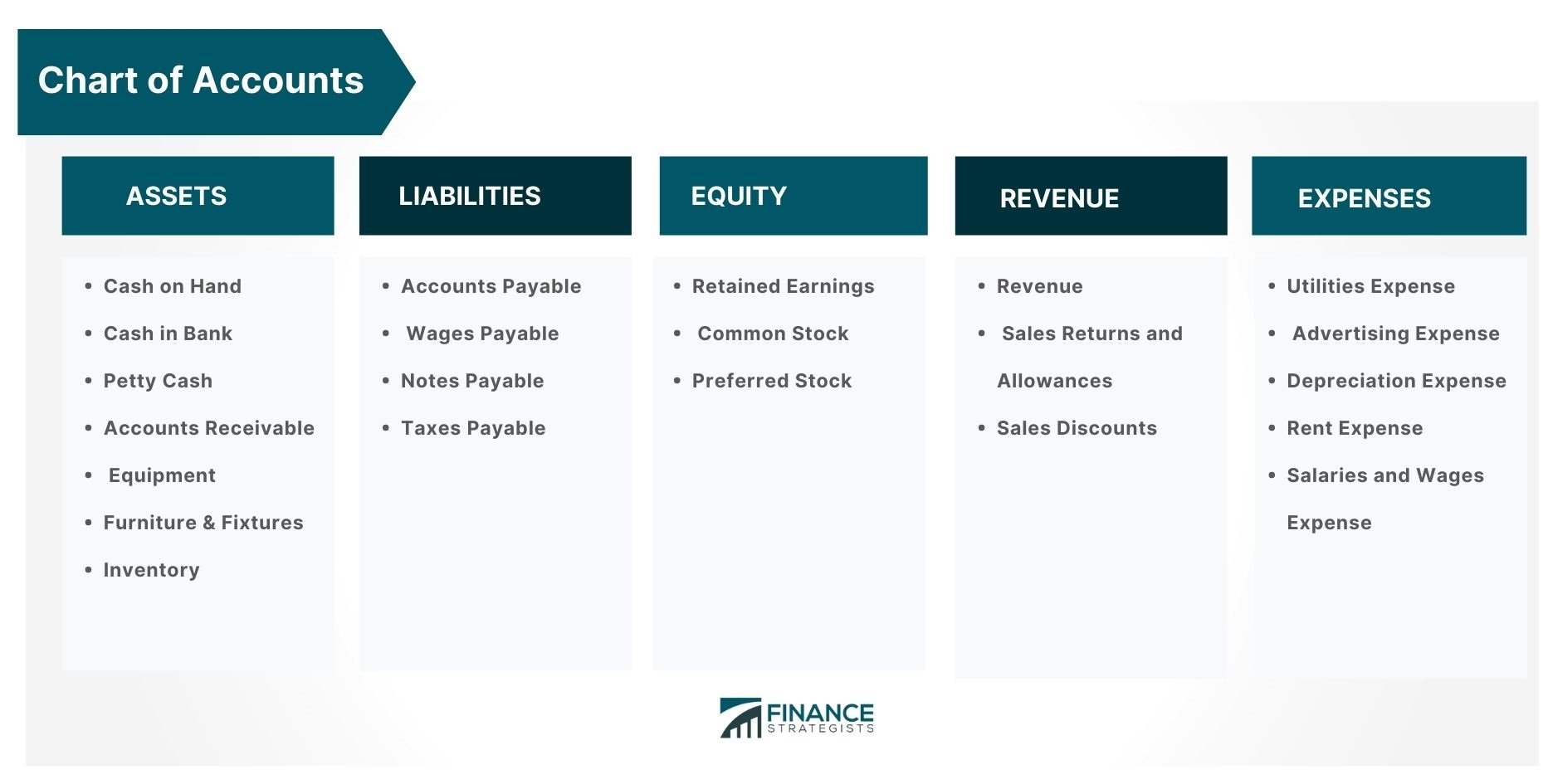Chart of Accounts (COA) Definition
What Is the Use of a Chart of Accounts?
How to Set up a Chart of Accounts
In order to set up a chart of accounts, begin by listing down the typical accounts that apply to your business. Some of these accounts would include:
Account
The account column refers to whether a category belongs to a Balance Sheet or to an Income Statement.Category
Category refers to whether a sub-account is an asset, liability, equity, revenue, or expense.Sub-Account
This refers to the specific accounts to be used in making journal entries such as cash, accounts receivable, accounts payable, retained earnings, utilities expense, and revenue.Account Number
Each account is to be assigned a unique account number to be used for coding charges. Example of a Chart of Accounts
Below is an example of a chart of accounts: 
Why Is a Chart of Accounts Important?
Final Thoughts
Chart of Accounts FAQs
A Chart of Accounts is an organized list of the accounts used to categorize and track financial transactions in double-entry bookkeeping. It typically includes asset, liability, equity, income, and expense accounts.
A Chart of Accounts is organized according to categories and account numbers, which can be customized to meet the needs of each business. Account numbers typically range from 1-99 for assets, 100-199 for liabilities, 200-299 for equity accounts, 300-399 for income accounts, and 400-499 for expense accounts.
Having a Chart of Accounts allows businesses to easily track their financial transactions, generate meaningful financial reports, and maintain compliance with applicable regulations. It also ensures consistency in the way expenses are reported and simplifies bookkeeping tasks.
Yes, each business should have its own Chart of Accounts that outlines the specific account categories and numbers relevant to their operations.
The Chart of Accounts should be reviewed at least once a year to ensure it is up-to-date with any changes in business operations. Additionally, any significant changes should be reflected in the Chart of Accounts as soon as possible.
True Tamplin is a published author, public speaker, CEO of UpDigital, and founder of Finance Strategists.
True is a Certified Educator in Personal Finance (CEPF®), author of The Handy Financial Ratios Guide, a member of the Society for Advancing Business Editing and Writing, contributes to his financial education site, Finance Strategists, and has spoken to various financial communities such as the CFA Institute, as well as university students like his Alma mater, Biola University, where he received a bachelor of science in business and data analytics.
To learn more about True, visit his personal website or view his author profiles on Amazon, Nasdaq and Forbes.











